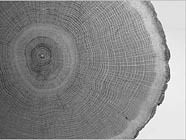
The animal life forms are characterized by their inability to absorb light energy from sunlight, although these definitions are simplified. Vegetable life forms are generally rooted in one place, whereas animal life forms are generally capable of movement. A mushroom is rooted in one place; although it does not absorb sunlight for energy, it relies instead on the energy content of its food. In recent years, the scientists who classify things have decided that fungi are different enough from plants that they should get a third, separate category. Life forms now are "animal" and "vegetable" life forms, some of which are called "plants" and some called "fungi."
The ultimate source of life energy is sunlight. Many life forms take that energy, store most of it in their physical and chemical structures, and use up the remainder. Those life forms are plants, and they are eaten (while alive) by animals, and sometimes by fungi. Some of those animals are eaten by other animals. Some of the plants and animals that were lucky to not be eaten entirely by others eventually die. Various fungi and plants and animals feed on the corpses. Various other fungi and plants and animals feed on them. Generally speaking, the ones that move the fastest and/or grow the fastest and/or multiply the fastest tend to survive. For example, fast-growing plants that scatter many seeds flourish in the Amazon rain forest, even though they cannot run quickly. Humans move quickly, even though they do not grow the fastest nor multiply the fastest. The life span of an individual life form is also obviously a factor. Every life form has some factors that combine to favor its survival.
Each time one life form eats another, some of the stored energy is used up by that life form in maintaining its own life, and the remainder is either excreted as waste (for that organism, perhaps, but for another perhaps as fertilizer) or stored as chemical energy within the tissues of that life form itself.
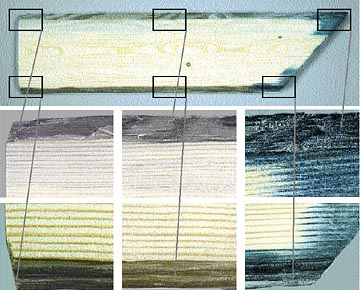
Fungi are one of the oldest and most primitive life forms on this planet. Fungi feed on just about anything, whether dead or alive. Fungi move by growing more fungal cells that spread further by growth; they don't have legs or wings or swimming fins as some other life forms do. When a cell of fungus is in contact with something, and it is hungry, the cell secretes digestive enzymes onto what it touches. The enzymes break down the surface and dissolve it, and the cell absorbs the digested material as food. The stomach of a fungal cell is its outside surface; if a human body worked that way, our stomach would be on the soles of our feet, and if we wore shoes all the time we'd either starve to death or learn to eat our shoes.
Plants reproduce either by scattering seeds, which are a kind of egg, or by sending out shoots, runners, buds or branches (some kind of extension of the main body that is capable of taking root and becoming independent). Fungi reproduce in two ways. First, they make buds, forming new cells at the tips of old ones, spreading in branching strands everywhere they can find something edible. Second, they reproduce by creating seeds, called spores. The spores are smaller than can be seen with the human eye. They are so small and light that they drift on the wind. There are many varieties of fungal spores drifting in the air all the time. When it rains, the spores are picked up by rainwater and carried everywhere rainwater leaks into. As the rainwater evaporates, the humidity of that surface drops from 100% down past moist to damp to maybe-damp to sort-of-dry to completely dry.
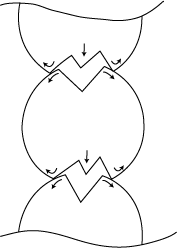
There are also bacteria, a different kind of life than fungi, but still a microscopic single-cell life form. They are more like an animal than a plant, some more like a fish and some more like an air-breathing animal. There are thousands of different kinds of bacteria, and many of those will also make spores when the region dries out.
Bacteria tend to prefer the wood more damp than do fungi, but there is a humidity range where both can live. Many bacteria can survive drifting through the air until they contact a wet surface. Some bacteria live completely immersed in water. Most bacteria can move about. Some wiggle, others have many small legs they use to crawl about with, or to swim through the water in search of food or company.
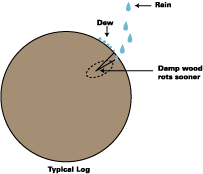
Wood is said to breathe because the natural humidity of wood, perhaps 5-15% (once it has sat around in your garage for six months), can increase or decrease as the humidity of air varies. The air humidity ranges from about 10% in a dry summer to about 95% in a humid summer.
Humidity (of air) means how much water vapor is dissolved in the air. Ten percent humidity means the air is holding 10% of its maximum capacity. Ninety percent atmospheric humidity means that the air is holding 90% of its capacity. At 100% humidity it is raining.
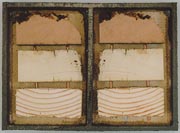
Top Pair: Redwood with deteriorated upper edge.
Middle Pair: Douglas fir with deteriorated edges.
Lower Pair: New wood-bought at Home Depot - 2x4, possibly Radiata Pine.
Wood holds a little water very strongly and more water with less strength and even more water rather casually. When there is less humidity in the air, wood loses some of its water to the air by evaporation. When atmospheric humidity is high, damp wood may lose some of its water but really dry wood will actually capture some water from the air.
The small branches of plants are very flexible because the wood is full of water. As wood dries out it becomes stiffer. Dead branches of wood or old wood found in the desert may be quite brittle.
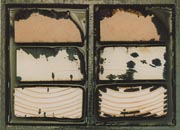
If you put a piece of wood in water, it floats about half-above the water and half-below. This shows that wood is less dense than water. Wood is about 50% empty space inside before decay starts. More deteriorated wood in water becomes "waterlogged." In this condition, water has gotten into most of the empty space inside the wood, and it floats with less of its volume above the water, or may even sink when there is no air space left inside the wood. You may have seen waterlogged wood on the bottom of a pond, or handled waterlogged or damp wood and noticed how much heavier it was than dry wood.
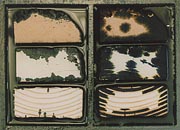
All woods consist of cellulose fibers bonded together by a natural resin (lignin), which acts as glue. In sound wood, typically 7-15% moisture is present (chemically attached to the cellulose) depending on average humidity. There is also a varying amount of "sap," which is a complex mixture of different oils and resins.
Hardwoods such as oak have different resins than softwoods such as fir. To obtain a good bond between wood fibers, the bond must be very flexible since wood expands and contracts as the humidity in the air changes with the weather and the seasons. The fungus that causes dry-rot retains a lot of moisture and inhibits effective penetration of sealers that cannot dissolve water. An active fungal infestation may have 15-30% water in the wood. Mildly dry-rotted areas can be epoxy-impregnated very effectively by a Clear Penetrating Epoxy Sealer(tm) (CPES(tm)) since it can dissolve water, and penetrates selectively the deteriorated portions of wood, whereas water impregnates selectively the sound parts of wood. The selective impregnation has been documented in a scientific study, with time-lapse photographs. The study is published on the Internet at www.woodrestoration.com.
Wood tends to check (develop cracks along the grain) with age as it dries out and shrinks. Log buildings, which are not constructed with the "double-cut long groove" method, according to a recent article in an Australian publication, will develop uncontrolled checks on the outer surface; with that construction method the checks are negligibly few, and typically only a couple of millimeters deep.
If the logs from which a building is constructed are painted on the outside with a clear finish, so as to provide a thick film of ultraviolet-absorbing material that will protect the wood color of the logs, this will prevent the logs from drying out after water exposure. People living inside a log building evaporate water from their bodies, by perspiration, exhaled humid air, and normal cooking, washing and bathing activities. This humidity will be absorbed on the inner surfaces of the logs, and must be allowed to evaporate off of the outer surfaces. Preventing such evaporation will lead to an increase in the moisture content of the logs, and, with the entire length used for an absorption surface inside, plus all the checks on the outside as entry points for liquid water, and only the exposed butt ends for evaporation to the outside environment, rot becomes quite active in the center of the log. This sort of external coating was done in Canada in the 1980s, and it was normal after 10-15 years to find the entire inside of large logs rotted out.
For more information, contact The Lignu Technology Institute of Wood Restoration, 5100 Channel Avenue, Richmond, CA 94804-4646; phone 510/237.5986; fax 510/232.9921; visit www.woodrestoration.com or www.lignu.com.

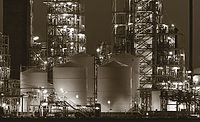
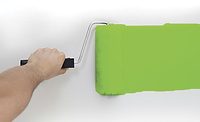
Report Abusive Comment